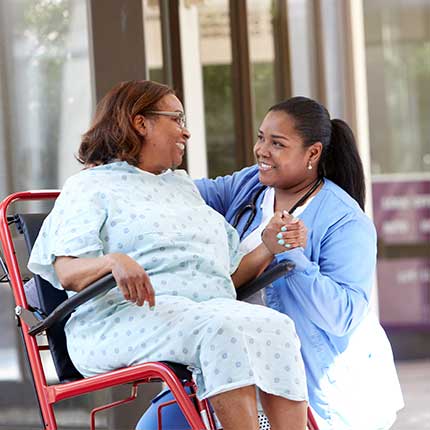Healthy Living
Help Prevent Sports Injuries with These Seven Tips
Whether you’ve joined a softball league or are signing up for your next race, the possibility of injury from the sport is not often at the top of your mind—though it probably should be. The National Safety Council reports that 3.7 million people received treatment in emergency departments due to sports and recreational equipment injuries in 2023. The activities commonly linked to these injuries include exercise, cycling and basketball. The highest injury rate was among 15- to 24-year-olds, with more males injured than females.
Often, people become injured by doing too much too soon, not being informed on proper techniques and not being physically prepared for the level of intensity of a sport. Keep your body in check, and learn how to prevent sports injuries with these seven tips.
- Take breaks. Yes, it’s ok to take five. Taking short breaks during playtime can reduce your chance of injury, allow your muscles to rest and prevent heat-related illnesses.
- Wear the right shoes and appropriate gear. Beyond ensuring that your shoes are suitable for the activity, how they fit is essential. Since feet swell during exercise, try shoes that are a little larger than the size you usually wear. Having about a half centimeter of space between your big toe and the end of the shoe is a good indicator of proper fit.
- Stretch and condition. Preparation is vital in so many aspects of life, including physical activity. Be good to your body by stretching and conditioning. It increases flexibility and strengthens muscles. Plus, developing your balance and coordination can help mitigate the risk of ankle sprains.
- Follow proper techniques. Learning how to play correctly is so important. Whether it’s the correct stance, the appropriate gait or even a specialized way of breathing, your body will thank you for being smart about the game.
- Stay hydrated. Dehydration results from losing fluid and electrolytes from sweat, causing fatigue, soreness, cramps and spasms. Always remember to keep water on hand to support nerve and muscle function.
- Warm-up and cool down. Wake up your muscles and tissues with a warm-up. It dilates your blood vessels, supplying much-needed oxygen to your muscles. A cool-down is just as important, as it allows your heart rate to come down to normal slowly and decreases the risk of cramping and stiffness.
- Don’t push it. Stop if you already have an injury or are feeling pain while playing. Not letting your body heal properly risks a more serious injury and longer recovery.
Get out there and have fun, but always check with your doctor before starting a new sports routine.
Sources:
American Academy of Pediatrics
National Safety Council



